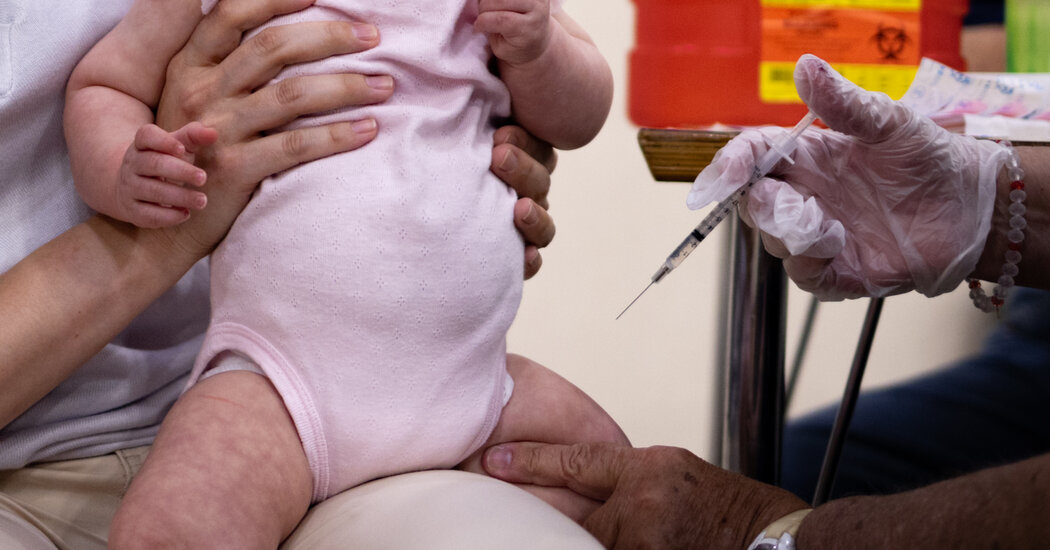

You would think that vaccination sites would have been swamped with parents rushing to vaccinate their young children against Covid after the Food and Drug Administration authorized the vaccines for the under-5 age group in June. But as of early August, around 5 percent of eligible children under 5 had received the first dose of the vaccine series. Worse, the number of them being immunized has been decreasing.
Some may argue that it’s harder to get their young children vaccinated because not all drugstores will give shots to babies and toddlers. But the fact that uptake is still so low, even though pediatricians and family physicians can provide them, suggests a lack of urgency. Moreover, only 30 percent of those ages 5 to 11 are fully vaccinated, and vaccines for that group have been authorized since fall 2021 and are available anywhere shots are given.
The best way to end the pandemic and keep everyone safe is vaccination. Immunization is the only intervention that gives the benefits of extended immunity without the dangers of infection for all ages. It’s what we’ve done to combat — and even eradicate — a host of diseases that used to ravage humanity.
What does it say, then, that most parents have not vaccinated their children against Covid? Even if, as the data would suggest, they’ve vaccinated themselves at much higher rates?
I fear that it’s indicative of Americans’ loss of trust in the public health system of the United States. Much of that is because of misinformation and disinformation spread about the safety and efficacy of vaccinations. But some of it is the result of inconsistent and often suboptimal science communication by public health experts.
Too many messages are still centered on trying to frighten people into compliance by arguing about worst-case scenarios and convincing them that things are as dangerous as ever. They amplify every new variant and predict future worsening. They point to charts of the unvaccinated and vaccinated and marvel at the differences in deaths.
Such charts almost always, however, depict outcomes that don’t easily apply to young children. If the goal is to convince parents to take action to prevent harm to their children, this won’t work.
The risk of Covid infection today is not what it was two years ago (or even last year). Hospitals continue to admit people infected with Covid, but many of them are incidentally so, and the intensive care units are relatively empty. Parents have seen many of their children, and their children’s friends, get Covid and do fine, adding to a belief that this isn’t nearly as dangerous as they were led to believe. This perception, when it comes to their children, isn’t necessarily wrong. If public health advocates want to change minds, then they are going to have to change their strategies to accept this safer reality.
Older people continue to be at the highest risk of death from Covid. Arguing that they needed to get vaccinated, and more, to save their lives made sense. Saying that childhood deaths from Covid are somewhat more common than influenza may be true, but too many parents don’t think influenza is a problem either. Many do not vaccinate their children against that, let alone mask and isolate them.
Some of the information is indeed confusing. Several European countries are not recommending vaccination against Covid in young children because they believe they are not at high enough risk of disease. I disagree with that decision, because even though it’s rare, youngsters do die of it (as they do from influenza). I have no problem recommending we vaccinate them against the flu, too.
What’s more, there are other outcomes from Covid that warrant intervention, and that’s most likely a better argument for childhood immunization. Children who are vaccinated have a lower chance of getting sick at all, and if they do get sick, they are likely to have a lower chance of getting severely ill, developing MIS-C or being hospitalized. They probably have a lower chance of being affected by long Covid, too. Such outcomes are far more common in children than death.
Further, getting more people immunized will lower the overall prevalence of Covid in the community and benefit everyone. We often vaccinate to protect those who cannot protect themselves. We should want as many people, including children, to get immunized as soon as possible to make all people safer. Focusing on the collective benefits instead of individual risks might yield better results. Acknowledging the continued danger while calling for a collective response to protect those most at risk might make more sense than lessening other measures while still calling the pandemic an emergency.
Fear-based messaging can backfire. Shaming people for not agreeing with your policies on Covid prevention will harden their positions, not make them more likely to agree with you.
The pandemic isn’t over. Cases are still rampant, too many people are dying and huge swaths of the world remain unvaccinated. If health experts cannot convince people that true dangers of Covid exist, then there will be little public will not only to vaccinate but also for other measures, like better ventilation and further spending on public health in general. Such things would undoubtedly improve health and safety but would require the investment of energy and resources.
Beyond Covid, many parents are not getting their children immunized against other infectious diseases. Polio — a disease that was once eradicated in the United States — has now been detected in the wastewater of New York.
Public health science isn’t decided by a vote. However, it requires most people to understand and support broad action to succeed. Those leading our efforts to fight the Covid pandemic need to change their tactics to win such backing, because what they’re doing isn’t working. We are not a country split on the dangers of Covid, but a country that may not be listening anymore.



